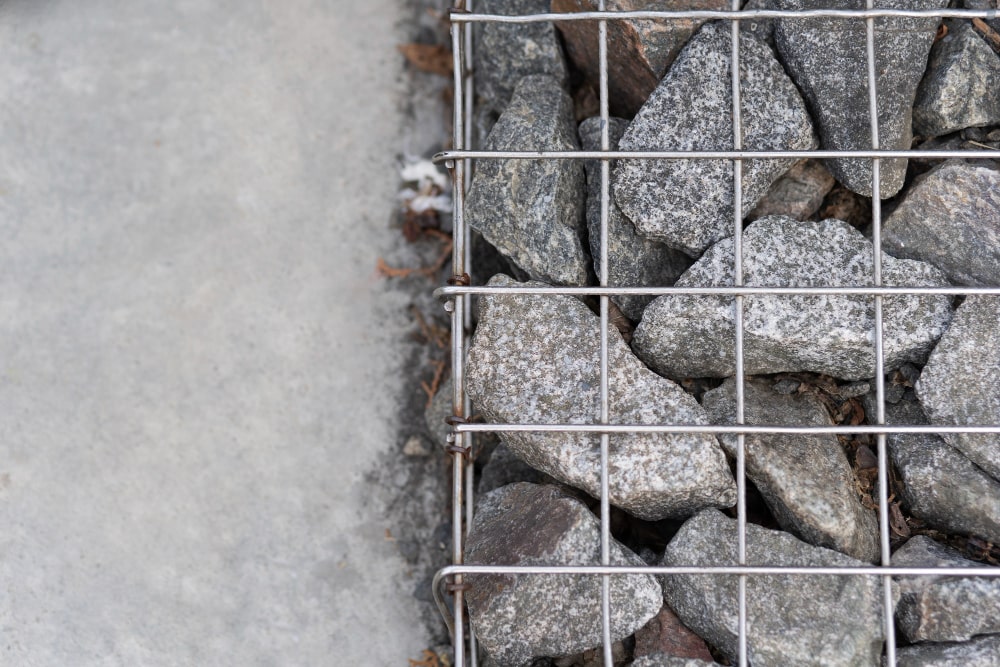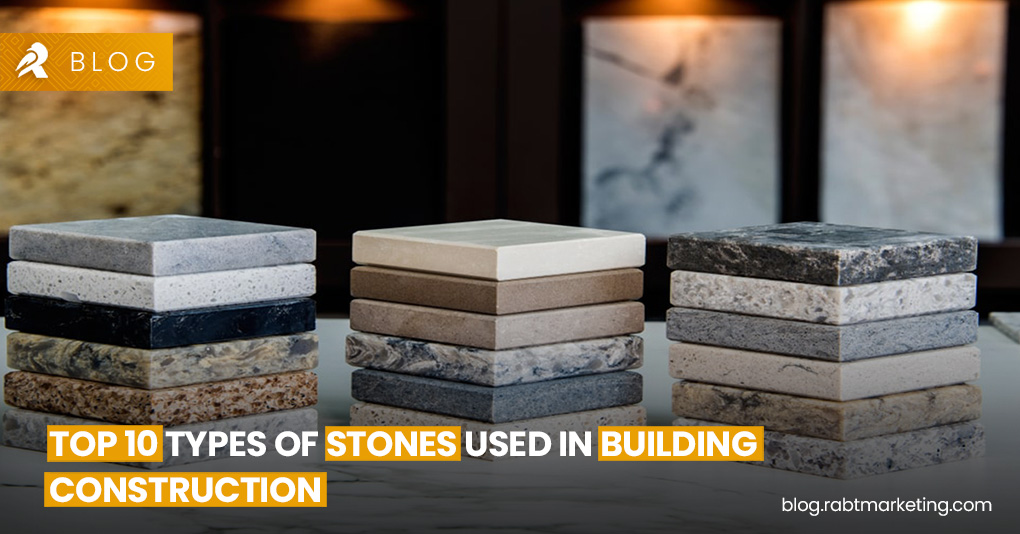Stones have been a fundamental building material throughout human history. They have been used in construction for centuries due to their durability, strength, and aesthetic appeal. They are versatile materials available in various types, each with unique properties and suitability for different applications. In this blog post, we discover the different types of stones commonly used in construction and their characteristics.
Classification of Stones Based on Formation

On the basis of geological formation, stones are classified as follows.
Igneous Rocks
Igneous rocks form from the solidification of molten magma. They are known for their durability and strength, making them suitable for heavy-duty construction projects. Examples include granite and basalt.
Sedimentary Rocks
Sedimentary rocks are formed through the deposition and solidification of sediments over time. Sedimentary stones are frequently preferred because of their unique patterns and textures, which are very popular for adding decorative touches.
Metamorphic Rocks
Metamorphic rocks result from the transformation of existing rock types under high pressure and temperature conditions. They exhibit exceptional strength and durability, which makes them ideal for both structural and decorative purposes. Marble and slate are prominent examples of metamorphic stones used in construction.
Common Types of Stones Used in Construction

Now, we discuss different types of commonly used stones in construction one by one.
Granite
Granite is a coarse-grained igneous rock known for its durability and aesthetic appeal. It is commonly used in countertops, flooring, and exterior cladding due to its resistance to abrasion and weathering.
Limestone
Limestone is a sedimentary rock composed primarily of calcium carbonate. It is versatile and widely used in construction for applications such as building facades, flooring, and landscaping.
Sandstone
Sandstone is a sedimentary rock characterized by its granular texture and diverse colour variations. It is valued for its natural beauty and is commonly used in building facades, paving, and decorative features.
Marble
Marble is a metamorphic rock well known for its elegance and luxurious appearance. It is often used in sculpture, flooring, and interior decoration due to its distinct veining patterns and smooth texture.
Slate
Slate is a fine-grained metamorphic rock known for its durability and resistance to water absorption. It is commonly used in roofing, flooring, and wall cladding applications due to its strength and natural beauty.
Granite
Granite is a coarse-grained igneous rock known for its durability and aesthetic appeal.It typically consists of quartz, feldspar, and mica minerals. It is commonly used in construction for countertops, flooring, and exterior cladding due to its resistance to abrasion and weathering.
Basalt
Basalt is a fine-grained igneous rock formed from the rapid cooling of lava. Basalt is typically dark grey to black in colour and may contain small crystals. It is used in construction for paving, road aggregates, and as a decorative stone due to its durability and hardness.
Gneiss
Gneiss is a metamorphic rock characterized by alternating bands of light and dark minerals. It forms from the recrystallization of existing rocks under high pressure and temperature. Used in construction for decorative purposes, countertops, and exterior cladding due to its unique appearance and durability.
Laterite
Laterite is a reddish-brown soil-like substance rich in iron and aluminium oxides. It forms in tropical and subtropical regions through the weathering of parent rocks. Commonly used in construction for building blocks, road construction, and as a raw material for manufacturing bricks.
Quartzite
Quartzite is a metamorphic rock formed from sandstone under high pressure and temperature. It is composed primarily of quartz grains fused together, resulting in a hard and durable stone.Mainly, it is used in construction for countertops, wall cladding, and paving due to its strength and resistance to abrasion.
Factors Influencing the Selection of Stone for Construction
Several factors influence the choice of stone for construction projects, including
- Geographical location
- Cost considerations
- Aesthetic preferences
- Environmental factors
Read More:- Glass as a Good Construction Material And Its Advantages, Disadvantages and Types
Read More:- Wooden Construction Material and its Trend in Construction Industry
FAQs (Frequently Asked Questions)
Q. Are all types of stones equally suitable for construction purposes?
Ans. No, different types of stones have varying properties that make them suitable for specific applications. It’s essential to consider factors such as durability, strength, and aesthetic appeal when selecting a stone for construction.
Q. What factors should I consider when choosing a stone for my construction project?
Ans. Factors such as location, cost, aesthetic preferences, climate resistance, and sustainability should all be taken into account when selecting a stone for construction.
Q. Is stone a sustainable building material?
Ans. Yes, stone offers several sustainability benefits, including durability, recyclability, and low maintenance requirements.
Q. Can all types of stones be used interchangeably in construction?
Ans. No, each type of stone has unique properties and characteristics that make it suitable for specific applications. It’s essential to choose the right stone for the intended use to ensure structural integrity and longevity.
Q. What are some common applications of different types of stones in construction?
Ans. Granite is often used for countertops and exterior cladding, limestone for building facades and landscaping, sandstone for paving and decorative features, marble for sculpture and interior decoration, and slate for roofing and wall cladding.
Final Thoughts
Wrapping up the final thoughts, the diverse range of stones available for construction offers architects and builders a wide array of options to meet various design requirements and project needs. By understanding the characteristics and properties of different stone types, stakeholders and all other parties can make well-informed decisions, laying the groundwork for successful and enduring construction projects. In short, we have to select good and durable material for the contruction projects for healthy construction practices and better future of our society.

